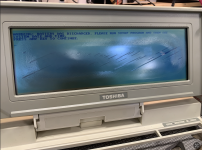Tom_of_Åland
Member
Hi guys, I'm fairly new to this forum.
I was delighted to see how much info and work you have done into the T1000LE, well done all! About a year ago I got the same machine, did a full recap and it started. I haven't started it since, will bring it out again when I get home in 2 weeks time.
What I'm thinking about is to replace the CMOS battery, or is that not advisable? Has anyone installed a new battery, if so where did you get it from?
Come to think of it, I haven't tested the floppy drive yet if it works... The laptop starts straight into some service program for an Air Conditioning plant.
Question, does the T1000LE accept other HDD's than the original, or is it BIOS "locked" as the T3200 for example?
If anyone needs any "live" values or readings from inside the T1000LE, I'd be happy to help as I'm opening it again anyway for the CMOS battery.
I was delighted to see how much info and work you have done into the T1000LE, well done all! About a year ago I got the same machine, did a full recap and it started. I haven't started it since, will bring it out again when I get home in 2 weeks time.
What I'm thinking about is to replace the CMOS battery, or is that not advisable? Has anyone installed a new battery, if so where did you get it from?
Come to think of it, I haven't tested the floppy drive yet if it works... The laptop starts straight into some service program for an Air Conditioning plant.
Question, does the T1000LE accept other HDD's than the original, or is it BIOS "locked" as the T3200 for example?
If anyone needs any "live" values or readings from inside the T1000LE, I'd be happy to help as I'm opening it again anyway for the CMOS battery.


